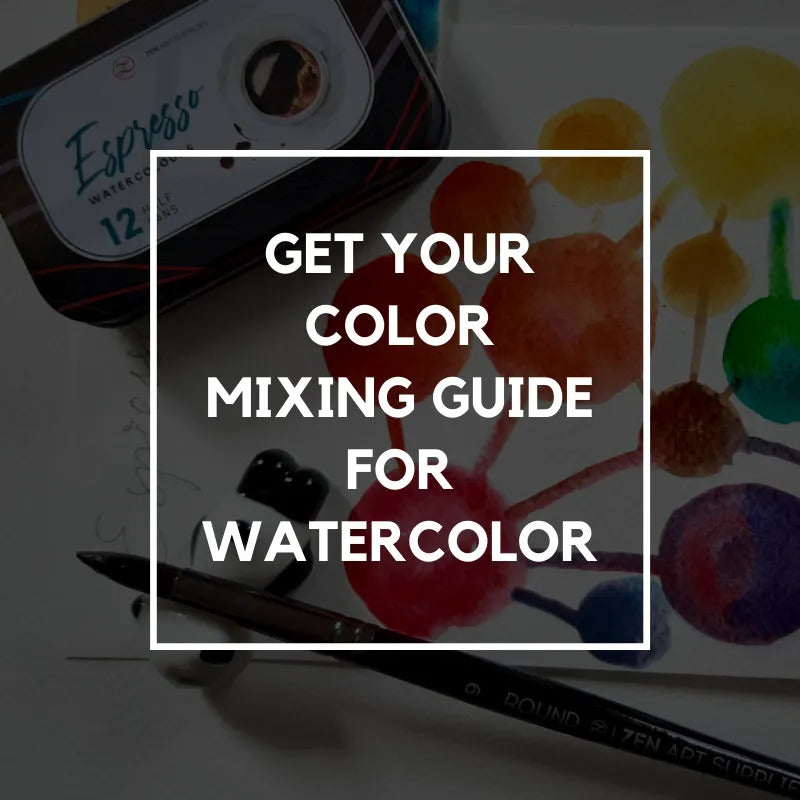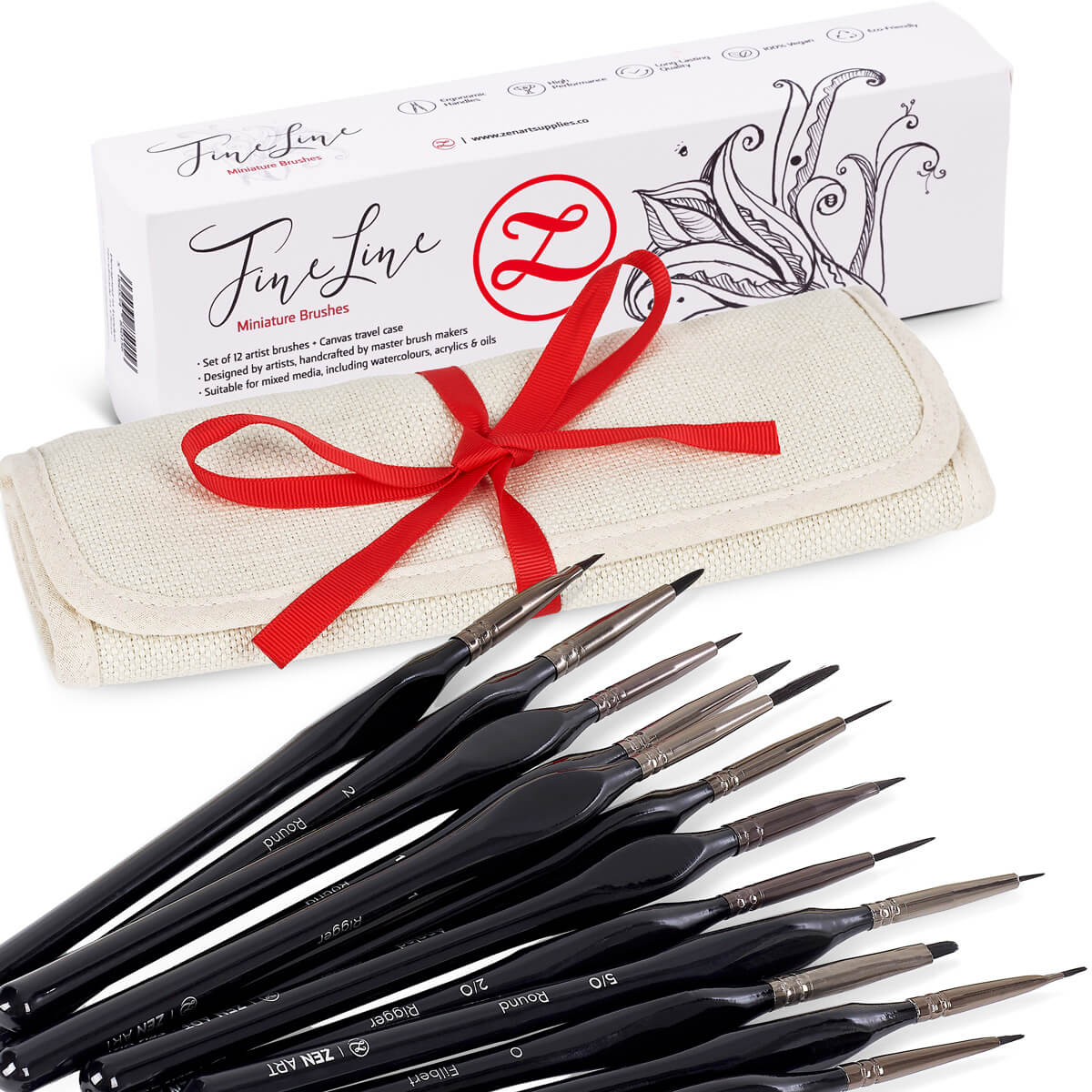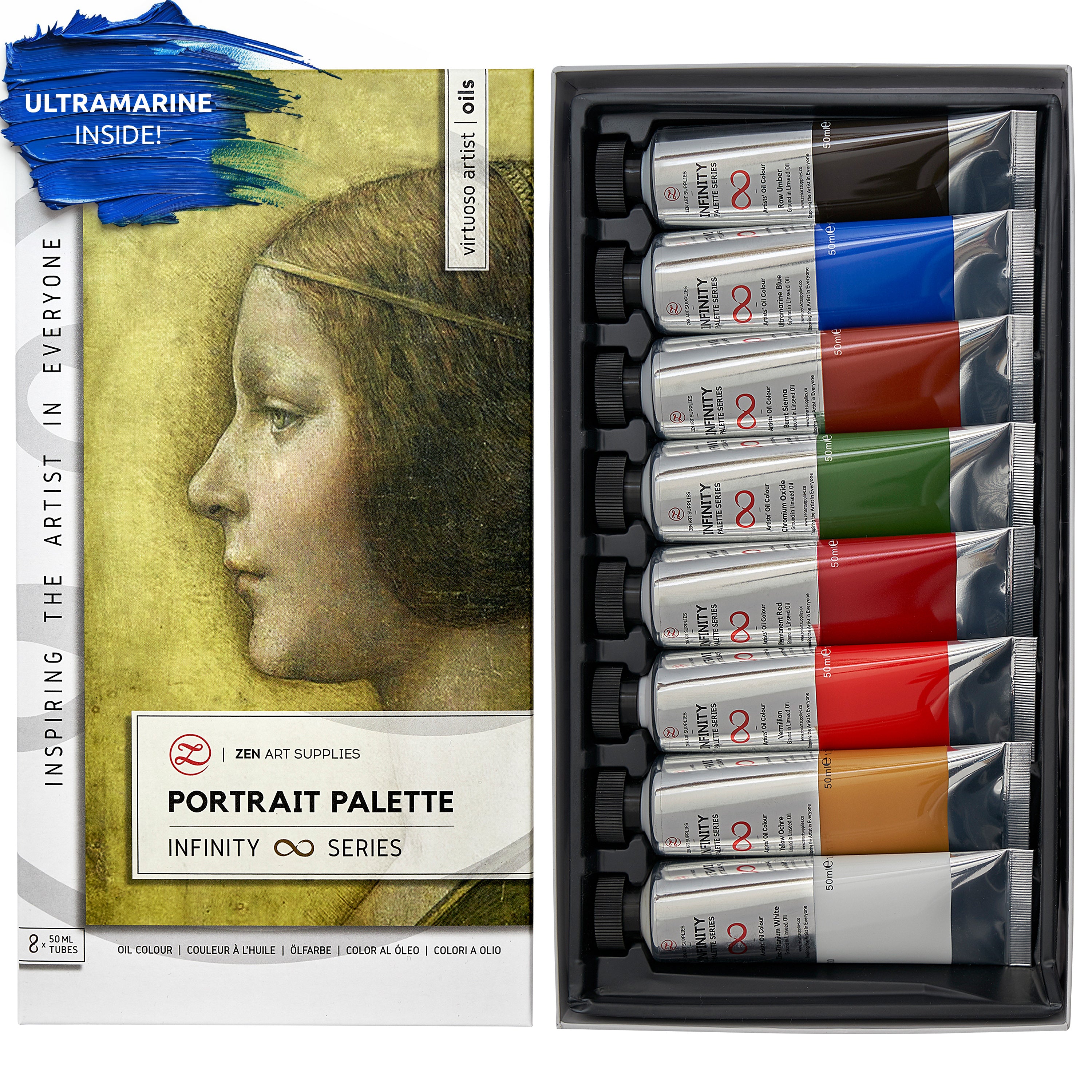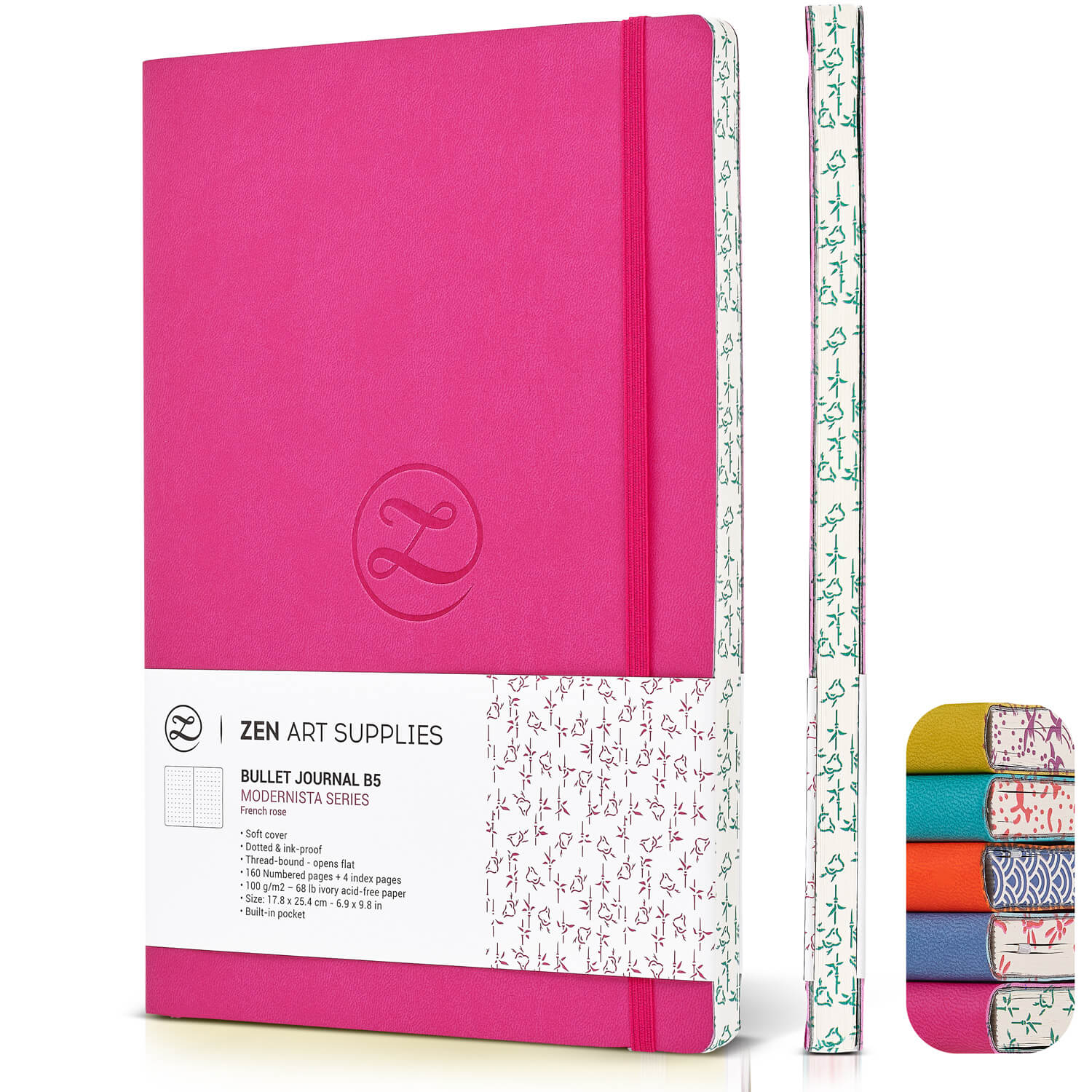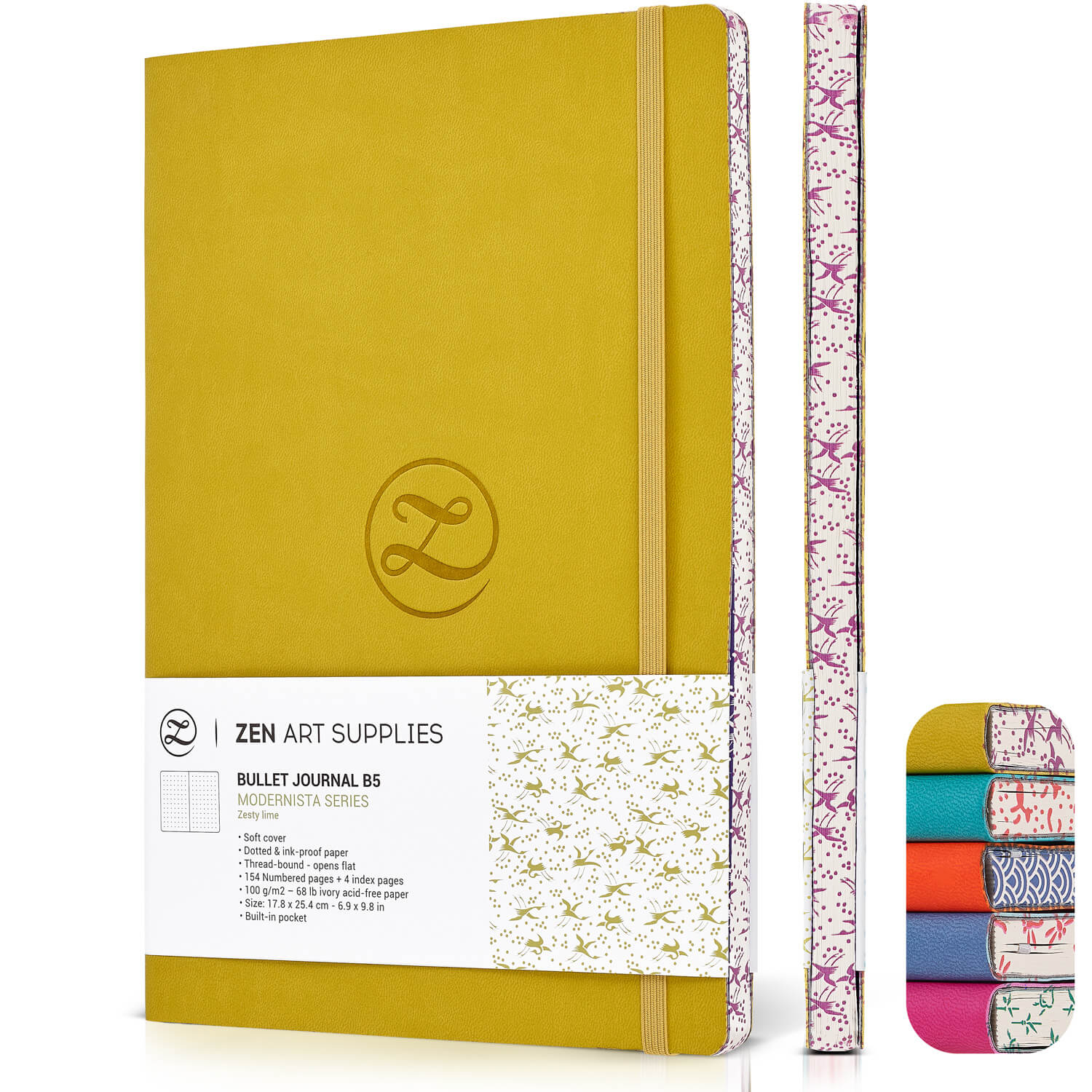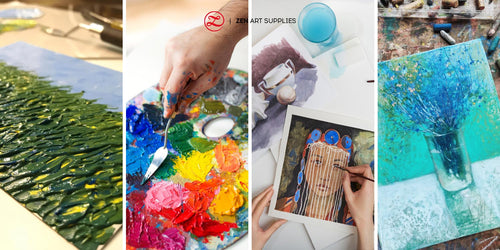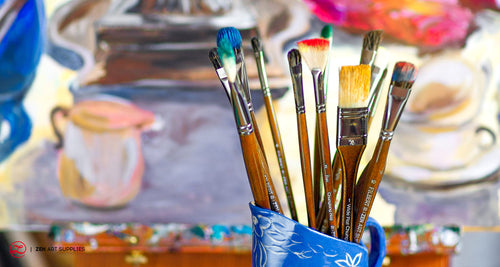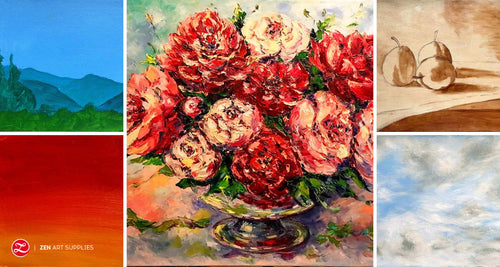Oil painting may seem intimidating to the uninitiated beginner or starting artist. For one, there are oil painting techniques and terms that sound completely foreign. After all, many of them are Italian.
So if you need a translator or glossary, you've come to the right place. Here's a guide to the terms you'll come across on your oil painting journey.
Alkyd
An alkyd is a type of synthetic polymer resin used to replace the slow-drying oils in oil paints. It's also used as a medium to speed up drying time. Get alkyd oil paints if you want quick-drying colors.
Alla prima
It roughly translates into "at the first" or "all at once." Alla prima describes a painting created and finished all in one go. This is also known as the wet-on-wet oil painting technique since you paint layers of wet paint on top of each other before everything dries up.

Monet's "Morning on the Seine", 1989, oil on canvas. He greatly believed in capturing the "light" in particular moments of a day, season, weather, and such.
Binder
A binder or vehicle is one of the main ingredients in every type of paint. It holds the powder-form pigments together and helps them adhere to a surface (e.g. canvas, paper).
Oil paint is a slow-drying art medium made of pigments suspended in an oil-based binder. The most common binder is linseed oil.
For other mediums, gum arabic is used in watercolor painting, egg yolks are used in egg tempera painting, and acrylic polymer is used in acrylic painting.
Bloom
A cloudy, often white patch that appears on varnished paintings. This happens when moisture gets trapped under the varnish. Blooms occur when an oil painting is kept in a damp or humid environment while it's still drying.
Brushwork

Every artist develops their own distinct style and you can see this in their brushwork. It's the signature way they move their paintbrush on a canvas to produce interesting effects.
Campitura

An even paint layer of opaque and flat color that's mixed with gesso. This creates a tinted starting layer or a colored ground for painting.
Chiaroscuro

Vermeer's Girl with a Pearl Earring is a perfect, classic example of chiaroscuro
It literally translates to "light dark." Chiaroscuro is used to describe a painting that uses a strong contrast and balance of light and dark. Think Leonardo da Vinci, Rembrandt, and Caravaggio.
Dead color
A term used to describe the colors used when underpainting.

Leonardo da Vinci's La Scapigliata is an unfinished painting where you can observe the 'dead colors' he used for his underpainting
Diluents
A liquid or medium used to dilute oil paints (e.g. turpentine). Diluents are meant to thin and not dissolve paints.
Drier

A substance added to oil paint or canvas to accelerate drying time. An alkyd is a drier.
As much as possible, you want your colors to dry at the same time, but there will be some colors (like burnt umber) that dry faster than others.
Dry brush oil painting technique

One of the more modern oil painting techniques, dry brush painting involves, as the name suggests, painting with a dry brush that holds paint but no oil or solvent. Using a bright or flat brush will give you the best result.
This oil painting technique is popular amongst street and portrait artists since it can produce smooth gradients and blurred edges.
Easel
A stand or frame used to support your canvas upright or at an angle. Also can be used to display your oil paintings.

Fat
How much or how little oil is used in oil paint. Low fat means lean or less oil, so it dries faster. High fat means more oil, so it dries slower.
Fat over lean
A rule of thumb everyone must learn when oil painting is to paint fat over lean. With every succeeding layer of paint, you need to add more fat or oil.
What happens if you don't follow the fat over lean rule? What if you apply solvent-thinned paint over an oil-rich layer of paint? The paint film can become chalky and crack over time.
Fugitive pigment
Some paints unfortunately can fade, lighten, darken, or even change color when exposed to light, temperature, and humidity. These paints contain fugitive pigments. A fugitive oil paint has a low lightfastness or permanence rating.
To avoid this, we recommend getting artist-quality paints that have good to excellent lightfastness ratings.
Gesso
A type of primer applied in thin layers to a wood panel or canvas. It helps prep the surface for oil paint to better adhere to. Traditionally, oil painters used a mixture of glue (usually rabbit skin glue) and chalk (also known as whiting). These days, the most common type used is acrylic gesso.

Glaze
A transparent and thin layer of oil paint that has been thinned with diluents. Glazes create depth and can create new colors on the canvas. When glazing, make sure the bottom layer is completely dry before adding another layer of paint. To create a nice glaze, it's best to use more transparent paints than opaque colors.
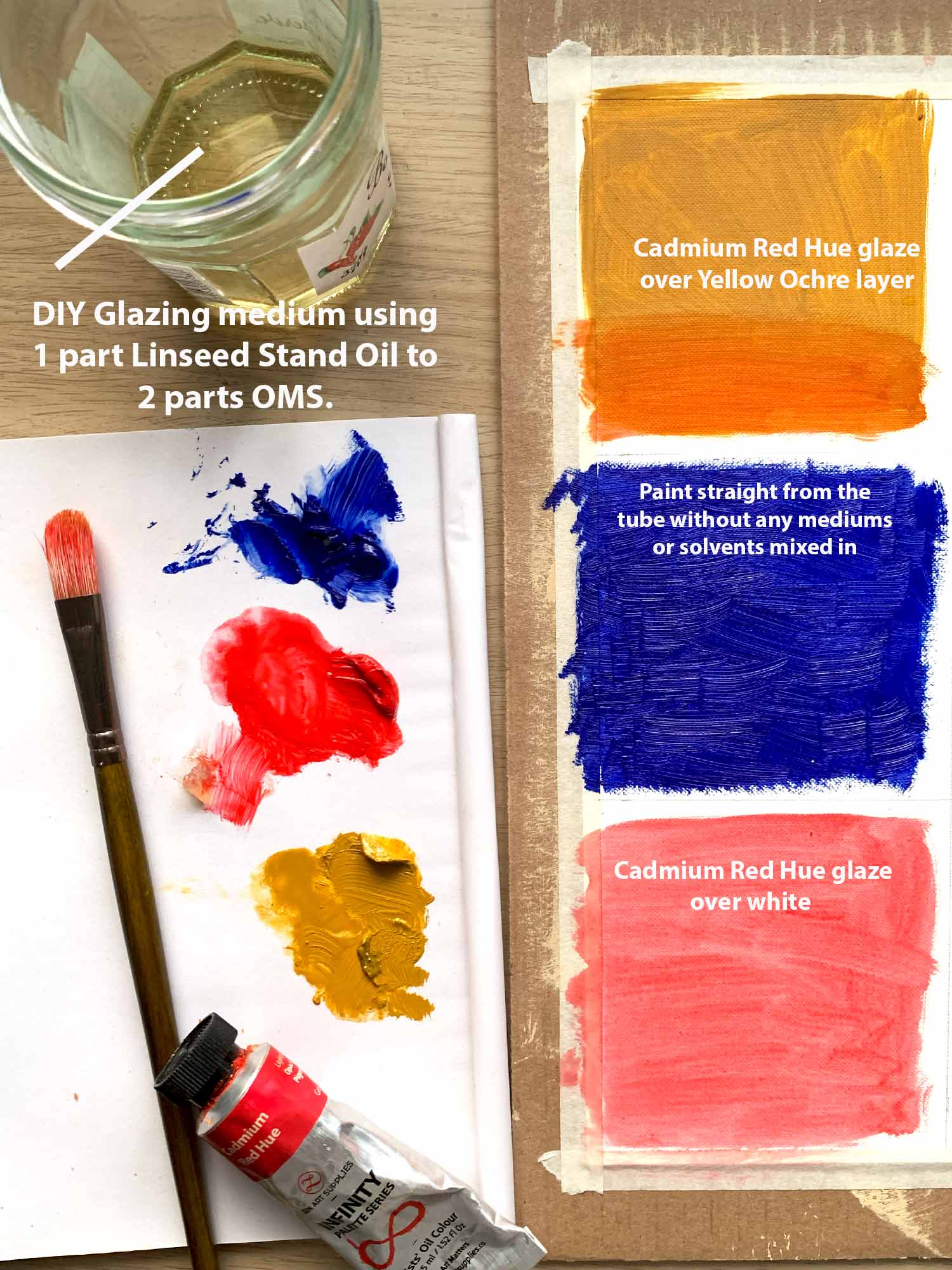
Grisaille
A monochromatic oil painting technique often used in underpainting.

Ground
A thin layer or coat of paint applied over primer or gesso. This gives the surface the texture and color you need to start painting. An oil painting ground is the foundation of your painting—it's what your oil paint comes in touch with. It's up to personal preference. Some artists like white ground while others like it toned.
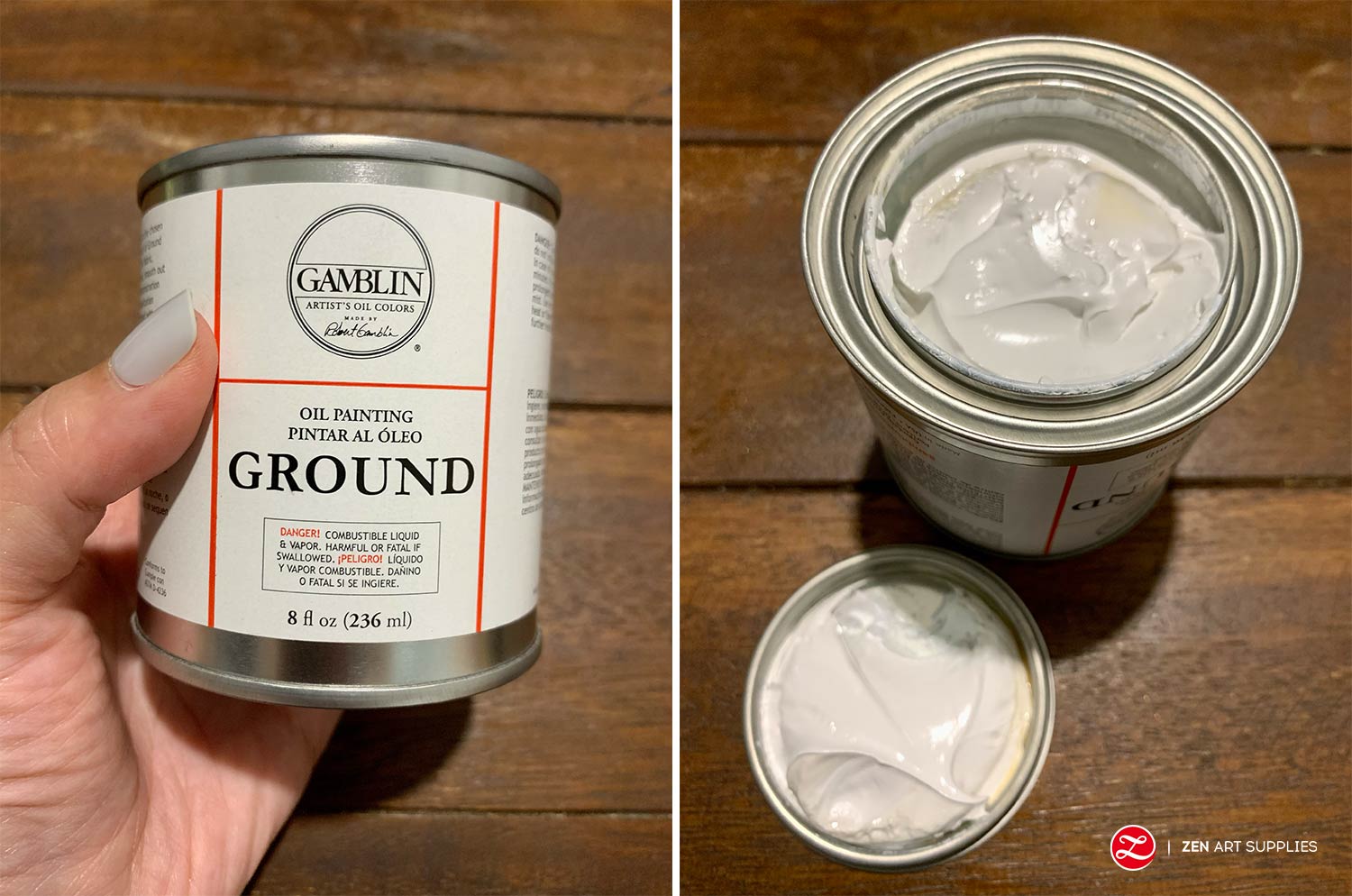
Hue
A hue can mean two things in oil painting. It's the perceived color or actual appearance of a color. It can also refer to oil paint that uses a combination of pigments to mimic the color of a more expensive pigment.
Impasto
Impasto painting is one of the more expressive kinds of oil painting techniques. It requires applying strokes of thick paint onto an oil paint surface. Usually, artists use a palette knife or a stiff brush. You can use an impasto medium to thicken paint, but since oil paint is already thick in consistency, it's not necessary.

Famous artists known for impasto painting include Vincent van Gogh and Jackson Pollock.
Imprimatura
An Italian term meaning "the first layer." It's an initial stain or thin coat of color applied over a primed or prepared surface. This provides you with a transparent toned ground. Make sure this layer of color dries completely before starting the actual painting process.

Key
Used to describe the overall tone or value of an oil painting. A painting has a high key if it's predominantly light, and has a low key if it uses predominantly dark values.
Lightfastness
How permanent or fade-resistant a paint color or pigment is, especially when exposed to light. It's sometimes also called permanence, but this also considers effects besides light like heat, humidity, and acidity.
Artist paints are rated according to standards set by the American Society for Testing and Materials (ASTM).
- I: Excellent
- II: Very Good
- III: Fair
- IV: Poor
- V: Very Poor
Alternatively, you'll see these ratings according to the Blue Wool Scale (for the UK).
- AA: Extremely Permanent
- A: Permanent
- B: Moderately durable
- C: Fugitive
Linseed oil
A type of oil made with flax seeds used to thin oil paint and extend its drying time. There are different kinds of linseed oil out there. The purest form is cold-pressed linseed oil, which gives a shinier and harder film when dry—however, this is a more slow-drying oil. more on that in our guide to mediums here.
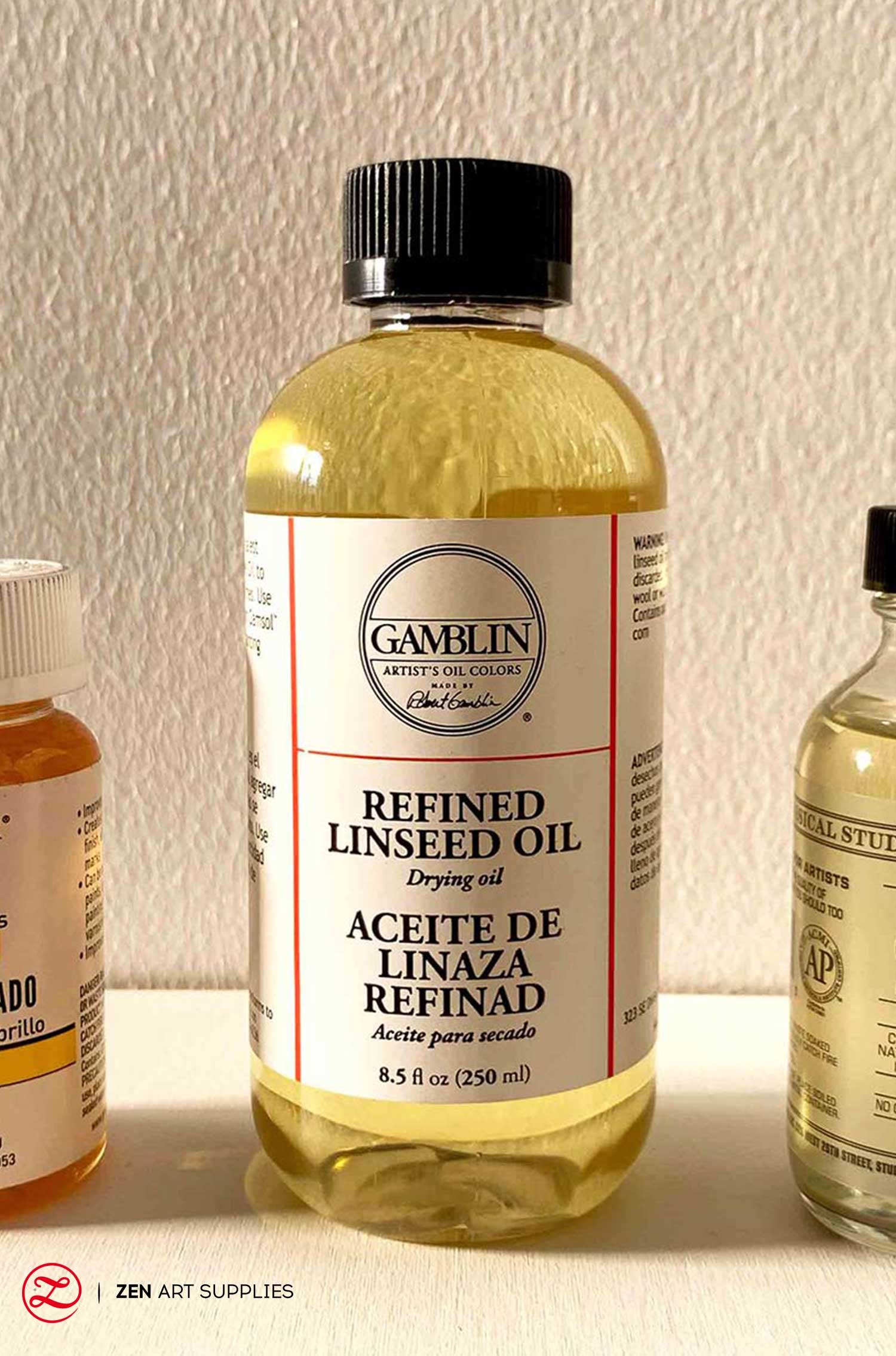
Local color
The actual color of an object under flat white light, unaffected by shadows or colors of light.
Mass Tone
Also known as mass color, this is the actual, undiluted, or untinted color of a pigment or paint straight out of the tube.

The Essential Palette from ZenART Supplies.
Moulding paste
Also spelled "molding paste," this is an opaque, white acrylic-based paste or medium used to create texture on the surface of an oil painting.
Oils
There's a wide variety of oils artists can use in oil painting to achieve their desired consistency, quality, finish, and drying time. Besides linseed, some other common oils are poppy, walnut, and safflower oil.

Opacity
The opposite of transparency or translucency. Opacity refers to how well a paint or pigment blocks light from passing through it. In other words, opaque paint will prevent under layers from showing through.
Palette
This can refer to the selection of colors used in an oil painting or the surface used for mixing paints.

Palette knife
You may confuse palette knives for painting knives. They're both metal or plastic spatulas used in many oil painting techniques. The main difference is that a palette knife is for mixing colors whereas a painting knife is used to apply thicker paint on a canvas.

The two leftmost palette knives come from ZenART's Verbena and Renoir Collection brush sets.
Pigment
A pure substance, most often a fine powder, that gives paint its color.
Plein air
A French term meaning "open air" that refers to paintings done outdoors instead of in the studio. The Impressionists—like Claude Monet and Pierre Auguste Renoir—preferred painting this way to best capture the effects of light on their subjects and landscapes.

Primer
Another type of glue applied unto a surface or canvas, to get it ready for paint application. It's usually applied after the size, in 2 to 3 layers. A primer is an absorbent coat that gives the paint something to stick to. Gesso is a type of primer.
Always size and prime your canvas or painting surface. To get a smooth surface, allow each coat to fully dry and lightly sand in between layers of primer.
Quadratura
One of the coolest, yet classic oil painting techniques that creates an optical illusion of depth and perspective. Fresco artists, notably during the Baroque period, did this to "open up a space" or to make flat surfaces look three-dimensional. It was often done to make ceilings look like the heavens or an open sky.

By Andrea Mantegna, di sotto in sù ceiling fresco using the Quadrato technique.
Scumbling
A thin or broken layer of semi-opaque paint brushed over an already painted surface. This creates texture in your painting while still exposing the bottom color or layer.

Sgraffito
Removing areas of paint by scratching, cutting, or scraping. This reveals the underlayer. Artists like Rembrandt employed this technique to achieve fine details in their paintings.
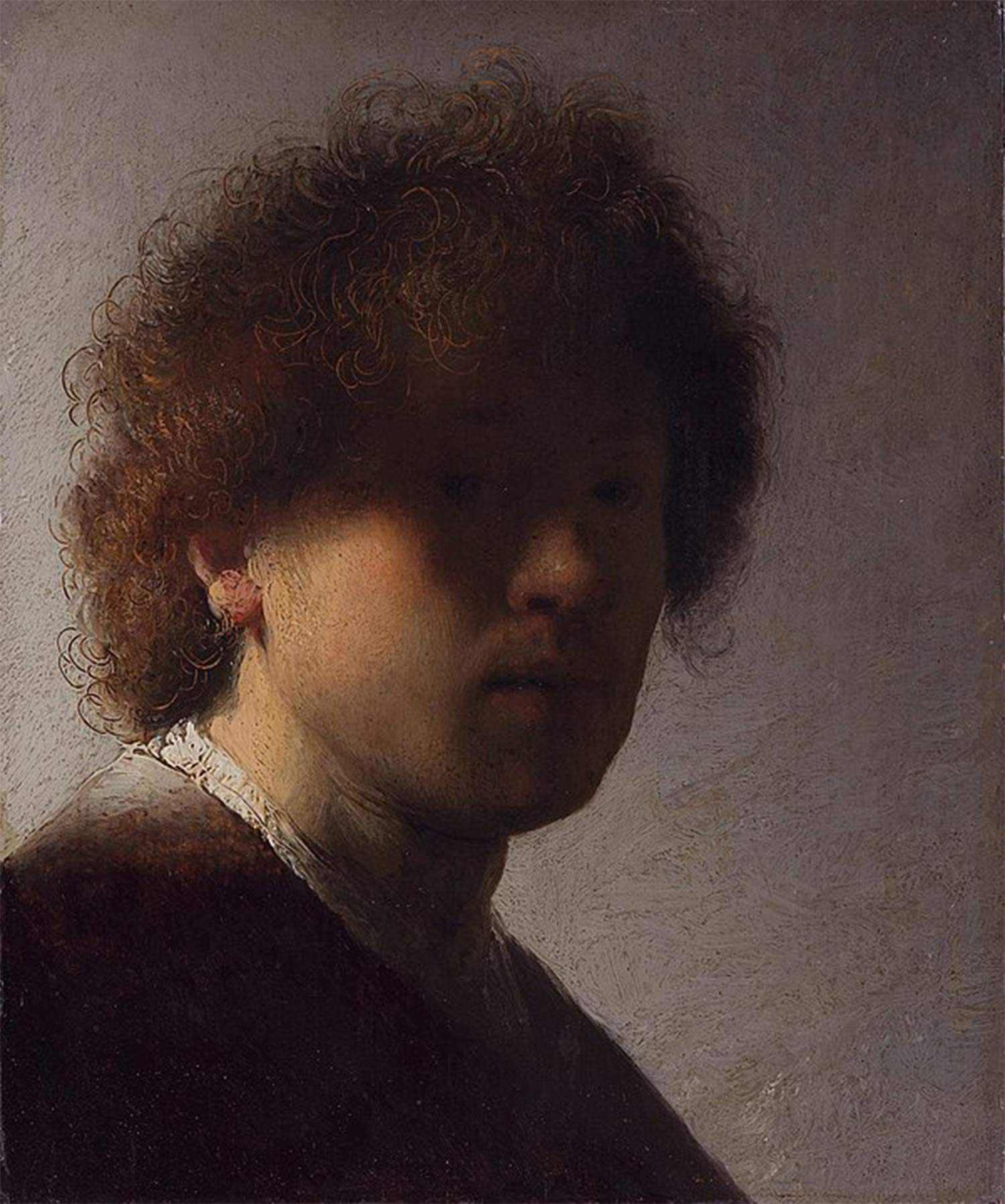
Shade
To make a paint or pure color darker by mixing it with black.
Size
A kind of glue used to seal wood panels or canvas before primer. You need to size or seal your surface so that the paint won't seep or sink through.

This is a necessary step to properly create a painting and ensure its longevity and structural integrity. Over time, paint can cause your unprimed, unsized canvas to rot or deteriorate.
Solvent
A substance used to thin paint and speed up its drying time. Solvents are also used for cleaning brushes and painting implements. Turpentine is the most commonly used one, but it's toxic and emits fumes so be sure to paint in a well-ventilated area. Other solvents include turpenoid, odorless spirits or artist's white spirits.

You can opt for non-toxic solvents or just not use them altogether.
Support
A general term for the surface you paint on (e.g. canvas, wood panel, paper).

Tint
To make a paint or pure color lighter by mixing it with white.
Tone
To make a paint or pure color duller or more neutral by mixing it with gray.
Trompe l'oeil
A French term that literally means "to deceive the eye." It's an illusionist, hyper-realistic style of painting that tricks you into perceiving a surface or object as real. Similar to quadratura.
Underpainting
The first or initial layer in oil painting commonly executed with a monochrome or dead color. It serves as the base of your composition, helping you map out where to lay down different colors.

Value
How light or dark an object is, or the relative lightness and darkness of a color. It's often established on a tonal value scale, where white is the highest and black is the lowest value.

Varnish
The final layer and a protective coat applied to a finished painting. Varnishes come in many finishes: matte, satin, glossy, and elsewhere in between. They also keep your painting protected from dust, cracking, and damage. Some varnishes now boast of UV protection for increased lightfastness.
Verdaccio
An Italian term for the greenish or muted earth-green color—made from a mix of black, white, and yellow—to form a complete monochromatic underpainting. It was popular and essential to fresco painting but can also be used as a base for portraits or glazes.
Below you can see in Michelangelo's unfinished painting the underpainting process he used using the verdaccio method.

Wash
A thin or transparent layer of color. This is a more commonly used term in watercolor painting, but it can also apply to oil painting.
Yellowing
An occurrence where an oil painting darkens or yellows, often when stored in the dark. It's unfortunate but definitely avoidable and reversible.
To keep your painting from yellowing, make sure to varnish your work in a dirt and dust-free space. Don't overuse linseed oil medium as it contains acids that yellow over time. Finally, avoid varnishes that are prone to yellowing.
Have you started oil painting yet?
Now that you know most of the common oil painting terms, we're sure you can master the art of oil painting! Are there any terms we missed? Drop them in the comments below, and we'll add them to the list pronto.
Still unsure of oil painting? We've got tips, tutorials, and guides to the different oil painting techniques and mediums out there. Check out our guide to oil painting mediums, choosing oil paint, and oil paint brush strokes and techniques.
Head over to the Toolkit section on the ZenART Supplies blog. See you on the other side!
- MEET THE AUTHOR -

Belle O. Mapa is a writer and artist based in Manila, Philippines. She believes that everyone is born with an inner creative spirit—we just need to nurture and discover it on the blank page. Currently, she lives out her passion: writing stories, hosting journaling workshops, and advocating for mental health awareness.










